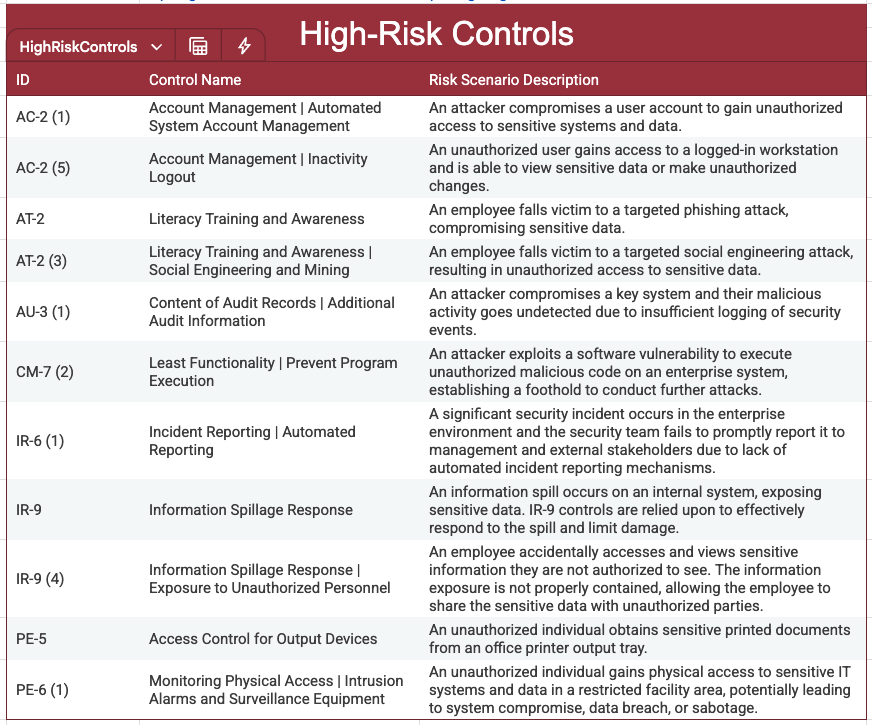Part 2: Toward Continuous Compliance Quantifying Risk with Bayes and Capturing Evidence in a Security Ledger

Part 2: Toward Continuous Compliance Quantifying Risk with Bayes and Capturing Evidence in a Security Ledger
By Chris Johnson, CTO of Knox Systems
In Part 1, we introduced the Security Ledger—a real-time, tamper-proof system that reframes FedRAMP compliance as a probabilistic, continuously updated measure, not a static report. Now, in Part 2, we go under the hood.
We'll show how Bayesian inference, log-likelihood ratios (LLRs), and ledger-based transparency work together to produce a living risk engine—one that is inspectable, auditable, and mathematically defensible.
And yes, we brought code and real data.
From Binary to Bayesian: Probabilistic Assurance of Control Effectiveness
FedRAMP controls aren’t simply "on" or "off." Their effectiveness shifts with context, evidence, and time. So we treat each control as a probabilistic hypothesis:
P(Control is Effective | Evidence)
This lets us reason continuously over real-world telemetry: IAM logs, patch scans, drift reports, vulnerability findings, and more. The system updates confidence scores in real time—no waiting for annual audits.
Step 1: Assigning Prior Probabilities
Every control begins with a prior belief—a starting point for how likely it is to be effective. These priors are informed by:
- Control category (e.g. access control vs. incident response)
- Historical failure rates
- Threat modeling and exploit severity
- Complexity and likelihood of drift
Example:
{
"AC-2": { "prior": 0.90 },
"SC-12": { "prior": 0.75 },
"SI-2": { "prior": 0.60 }
}These priors are tunable and evolve with new deployments and observed outcomes.
Step 2: Defining Evidence and LLRs
We define discrete evidence events—findings that either increase or decrease confidence in a control. Each is assigned a log-likelihood ratio (LLR):
log(posterior odds) = log(prior odds) + Σ LLRs
This additive update makes real-time scoring efficient and interpretable.
Example for SI-2 (Flaw Remediation):
"SI-2": {
"evidence": [
{ "name": "high_cvss_unpatched", "llr": -2.5 },
{ "name": "monthly_patching_completed", "llr": 1.0 },
{ "name": "vuln_scanner_stale", "llr": -1.0 }
]
}LLRs are computed based on empirical data and mapped to actual telemetry triggers.
Real-World Example: AC-2 (Account Management)
From our working model:
- Risk Scenario: A former employee's account is still active and exploited
- P(A): 0.3 (probability of compromise if ineffective)
- Evidence LLRs:
- Account review overdue: -1.2
- No MFA for privileged accounts: -1.5
- Active Directory logs confirm removal: +1.0
- Account review overdue: -1.2
This model is applied to all 323 FedRAMP Moderate controls using structured data and open analysis:
🔗 GitHub Repo: Knox-Gov/nist_bayes_risk_auto
Prioritizing What Matters: The High-Risk Controls
Using this model, we ranked all FedRAMP Moderate controls by severity and potential impact.
The Top 11 High-Risk Controls stood out due to:
- High exploitation risk
- Poor observability without targeted telemetry
- Broad system impact if compromised

These controls form the foundation of our telemetry blueprint—what every system should continuously monitor and score.
Step 3: Continuous Confidence Calculation
Every time Prometheus scrapes a new metric:
- Convert prior to log-odds
- Add up matching LLRs
- Convert back to a probability using the logistic function:
P = 1 / (1 + e^(-log odds))
This produces a dynamic confidence score for each control, updated in real time as evidence changes.
Step 4: Writing to the Security Ledger (Amazon Aurora PostresSQL)
Every update—control ID, evidence, LLRs, and confidence score—is appended as a new, immutable revision to Amazon Aurora PostresSQL, our Security Ledger backend.
Each record includes:
- Control ID
- Timestamps
- Prior and posterior probabilities
- Evidence names + timestamps
- LLR sum
- Operator ID (if manually overridden)
This creates a cryptographically verifiable audit trail. Auditors and agencies can trace any score, see what changed, and confirm whether evidence was valid and in-scope.
Why This Must Be Open
If machines are going to tell us when a control is “healthy,” then the logic behind it must be transparent.
That’s why we’re open-sourcing:
- The LLR control dictionary
- Control-to-evidence mappings
- Assumptions and source data
Just like LLMs disclose model weights and benchmarks, compliance logic must be explainable, auditable, and improvable by the community.
Compliance is too important to be a black box.
Recap: What We’ve Built
- Bayesian engine for dynamic scoring
- Prior and evidence probabilities for every FedRAMP Moderate control
- Identification of top 11 high-risk controls
- Immutable compliance ledger in Amazon Aurora PostresSQL
- Prometheus telemetry mapping in progress
- GitHub: Open LLR control spec
-
Frequently Asked Questions
1. How does Bayesian inference improve FedRAMP compliance monitoring?
Bayesian inference continuously updates each control’s confidence level based on real-time evidence, allowing compliance teams to quantify risk dynamically rather than rely on periodic assessments.
2. What role does AI play in continuous compliance for SaaS vendors?
AI automates evidence collection, calculates log-likelihood ratios (LLRs) or similar statistical indicators, and updates control probabilities in real time—transforming compliance from static documentation into a living risk model.
3. How does Knox use telemetry tools like Prometheus for compliance tracking?
Knox leverages Prometheus to scrape and store live metrics tied to FedRAMP controls, enabling continuous monitoring and automated confidence score updates within its Security Ledger.
4. Why is transparency important in AI-driven compliance systems?
Open-source models and transparent model reference dictionaries or explainability maps ensure that AI logic behind compliance scoring remains auditable, explainable, and trustworthy for agencies and auditors.
5. How does the Security Ledger ensure auditability in real time?
Every compliance update is immutably logged in a managed PostgreSQL-compatible database (such as Amazon Aurora) with timestamps, evidence data, and probability revisions—creating a cryptographically verifiable audit trail.
Coming in Part 3:
We’ll go deeper into instrumentation—mapping every FedRAMP Moderate control to Prometheus-compatible metrics and redefining the role of the 3PAO as a real-time verifier of system integrity.
The future of trust is continuous, explainable, and open. Let’s build it together.




